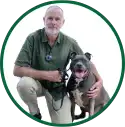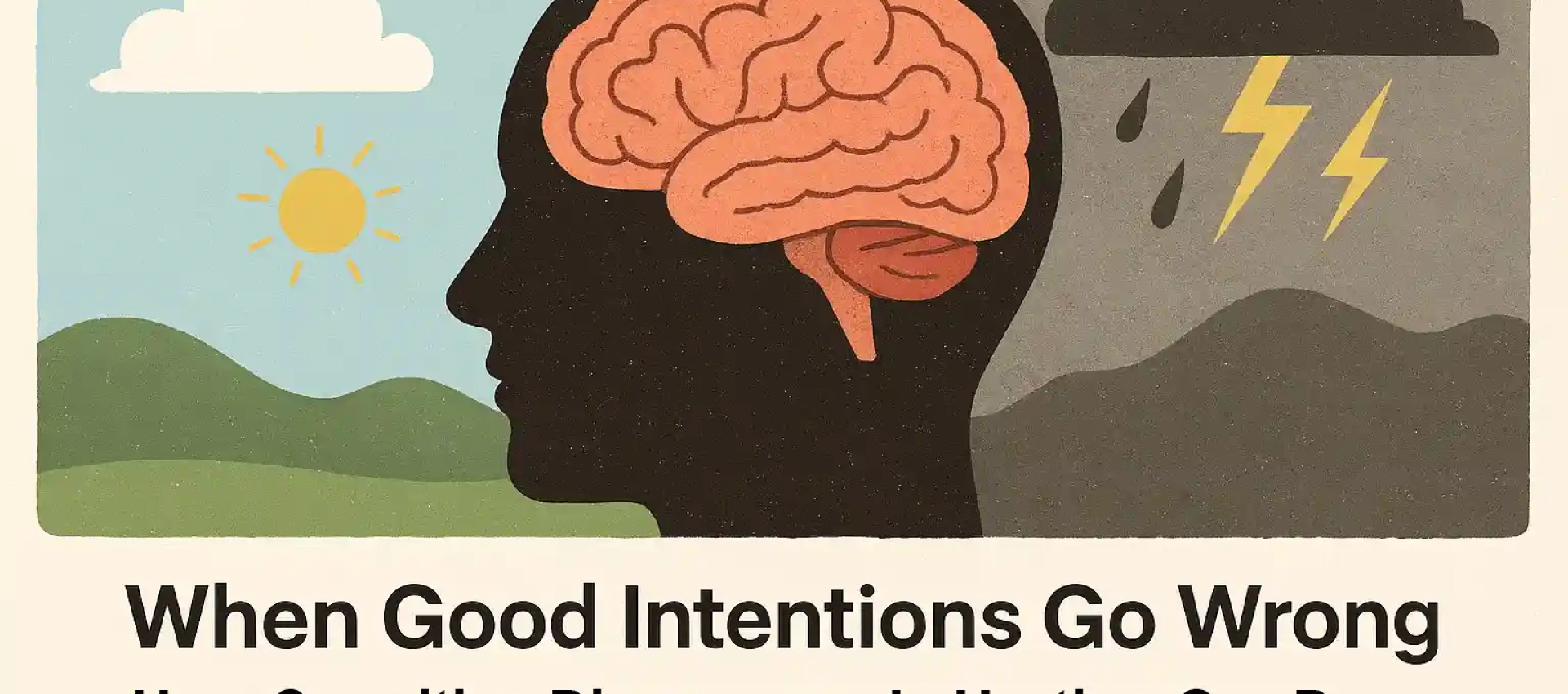The Cognitive Dissonance Crisis in the Dog Community
It is becoming harder and harder to talk about dog behaviour without emotions taking over the conversation. Many owners genuinely want the best for their dogs, yet have been led to believe that love means softness, that discipline means cruelty, and that science has somehow proven that balance and consequence have no place in modern dog training.
But the truth is, we have entered a period where emotion often outweighs reason. Many people are no longer observing their dogs with clear eyes, but through a fog of ideology and guilt. This is where cognitive dissonance takes hold, and our dogs are the ones suffering because of it, and our relationship with our dogs.
What Cognitive Dissonance Actually Is
Cognitive dissonance is a psychological term that describes the mental discomfort we feel when we hold two conflicting beliefs or ideas at the same time.
When reality does not line up with what we want to believe, instead of facing that uncomfortable truth, we often twist the story in our minds so it makes sense again. It is something we all do. It is human nature.
For example, a person might know deep down that eating junk food every day is bad for them, but they convince themselves it is fine because they work hard or deserve a treat. It is not logical, but it helps reduce the tension between their actions and what they know is true.
Now take that same principle and apply it to how people view dogs.
How This Shows Up in the Dog World
So many dog owners today have been convinced, even conditioned, by emotional and human centred ideologies to ignore what is right in front of them. They are told not to believe their own eyes, not to trust their instincts, and to dismiss their dog’s natural learning processes as outdated or cruel. This has created a culture built on feel good slogans and soft sounding ideas that completely ignore how dogs actually think, feel, and learn to survive and coexist harmoniously within their social groups/packs..
And the sad truth is that our dogs and our relationship with them are suffering because of it.
The “Science” Problem
A major driver of this confusion is the way science is being used in the dog training world.
Dog owners are constantly told that positive only and force free training methods are scientifically proven. It sounds reassuring, but what most people do not realise is that much of the science being used to back those claims has been cherry picked to fit a certain agenda.
Studies that support balance, structure, or the role of consequence in learning are often ignored, while only the parts that sound pleasant or easy are promoted. This gives the illusion of a clear scientific consensus when, in reality, the science of learning and behaviour is far more complex and nuanced.
And here is where cognitive dissonance shows up again. Deep down, most people know that this type of learning does not exist in nature.
No animal learns purely through reward. Every species on this planet, including us, learns through both positive and negative experiences, through clear cause and effect.
That is how balance is created and how behaviour stabilises.
We accept this truth in every other part of life. We know that children need boundaries and correction as much as praise and encouragement. We know that actions have consequences in the real world. Yet somehow, when it comes to dogs, people have been convinced that acknowledging this reality is cruel, especially when it comes to any form of negative consequence.
That is pure cognitive dissonance, knowing something is true in one context but denying it in another because it feels uncomfortable to face.
And here is something every dog owner needs to hear clearly. You should never be made to feel guilty for recognising and accepting the complex reality of natural learning theory.
Natural learning is not a human invention. It is a universal process that governs all life on the planet. Every living being learns through experience, through feedback from the environment, and through understanding which choices lead to positive outcomes and which do not.
Accepting that truth is not cruel. It is wise, it is compassionate, and it is essential for building healthy, balanced relationships with our dogs, and psychological stable and confident dogs.
How This Misunderstanding Shows Up in Everyday Life
One of the most common examples of this can be seen in how people interpret their dog’s emotional state.
Take the classic situation where an owner comes home after being out. Their dog completely loses control, barking, spinning, jumping, mouthing, and unable to settle for several minutes.
Most owners see this and think, “Look how happy they are to see me.”
But if we look a little deeper, the reality is very different. That behaviour is not excitement — it is anxiety. The dog’s nervous system has gone into overdrive. They have lost emotional control, and their brain is flooded with adrenaline and cortisol, and are in a distressed state.
What makes it worse is that owners often encourage this response by raising their voice, clapping, using baby talk, and making a big fuss. Without realising it, they are reinforcing that frantic, unstable state of mind. Over time, this becomes a learned emotional pattern, and the dog starts living in a constant state of tension and over arousal.
It is not joy. It is distress disguised as happiness.
And here again, cognitive dissonance plays its part.
If a human behaved this way when greeting someone, screaming, jumping around uncontrollably, and completely losing emotional control, we would not call it excitement. We would recognise it as emotional instability, and probably suggest they seek professional help to work through it.
But when dogs do it, people call it love. They celebrate it. They even share videos of it online.
That is the power of cognitive dissonance. People know it does not make sense, but they cling to the comforting version of the story because it feels nicer to believe, not realising how detrimental it is to the dogs overall psychological well-being.
How Humans Handle Emotion
When two people who care about each other reunite, they smile, they hug, they exchange a few words. It is calm, grounded, and emotionally balanced.
We have learned to regulate our emotions in a healthy way, and that is what allows us to function socially. Dogs need that same balance and calm energy from us too. Animals learn this when young from their mother and is enforced by other pack members in their social group as they mature.
A dog that can control its emotions, remain calm during stimulation, and respond to guidance is a dog that feels safe, secure, and connected. That stability does not come from endless treats or emotional indulgence. It is built through structure, trust, and clear communication.
The Bigger Picture
Cognitive dissonance in the dog world is keeping people stuck. It stops owners from seeing what their dogs truly need because they have been told that anything outside of all positive is wrong or cruel.
The truth is that dogs do not need perfection. They need balance. They need clarity, calm leadership, and consistency.
When we deny a dog’s natural instincts and learning patterns to fit a human emotional agenda, we do not make them happier. We make them unstable.
It is not that dogs are broken. It is that too many people have been taught to ignore reality.
What True Kindness and Love Really Mean
Kindness is not about always making your dog feel good in the moment. It is about helping them be good — calm, balanced, and confident in the world they live in.
Real love is not endless affection, treats, or avoiding correction. It is being the steady, calm, and reliable presence your dog needs to feel safe. It is giving them structure, boundaries, and guidance, even when it is uncomfortable or inconvenient.
Dogs do not find comfort in chaos. They find comfort in clarity. They do not feel secure when they are allowed to spiral into over-excitement or anxiety. They feel secure when their human calmly shows them how to find stability.
True love is about doing what is right for your dog, not just what feels good for you.
It is about leading with compassion and fairness, not indulgence and denial. It is understanding that real kindness sometimes means saying no, stepping in to correct dangerous or unacceptable behaviours, and guiding your dog back to a calm and safe state of mind.
When we let go of the feel good myths and start truly observing our dogs for who they are, emotional, intelligent, instinctive animals, we begin to see the world through their eyes instead of our own human emotional lens.
That is when real connection starts.
© Mark Singer



